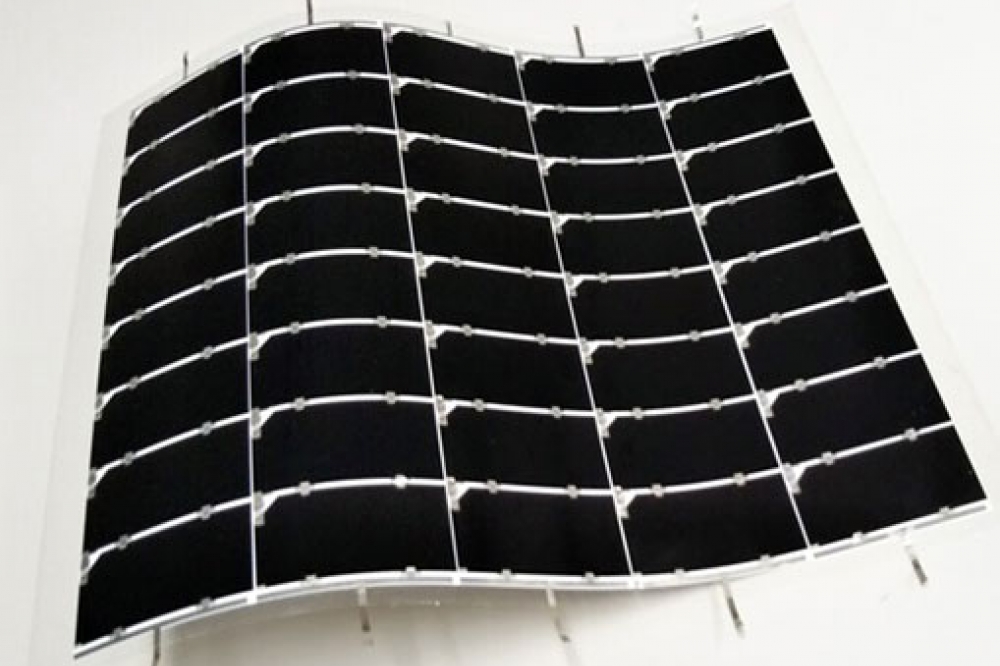Sharp Achieves 32.65% efficiency in flexible PV module

Lightweight, flexible solar module for EVs weighs about 56 grams per square metre
Sharp Corporation has achieved a conversion efficiency of 32.65 percent, in what it claims is a world first, in a lightweight, flexible, practically sized solar module. The technology was developed as part of the 'Research and Development of Solar Cells for Use in Vehicles' project, which is administered by the New Energy and Industrial Technology Development Organization (NEDO) of Japan.
The module’s conversion efficiency bests that of a similar Sharp module developed under another NEDO project in 2016, which notched an efficiency of 31.17 percent, at the time a world record. The new prototype solar module, which uses a triple-junction compound semiconductor design, is both lightweight and flexible thanks to its structure, which sandwiches the solar cell between layers of film. As a result, the module is expected to be used in a variety of vehicles, an application that demands high efficiency and lightweight construction.
Sharp will continue to conduct R&D into more efficient, lower-cost solar modules with a view to their use in applications including electric vehicles (EVs) and aerospace. The design, which embodies one path towards achieving carbon neutrality by 2050, will help reduce greenhouse gas emissions from vehicles.
Development Background
Power derived from renewable energy can be supplied directly by equipping EVs with solar cells, promising to make them more convenient for users, for example by lowering fuel costs and reducing the number of times they require charging.
Against this backdrop, Sharp has been developing high-efficiency, low-cost solar modules that can conform to the curved surfaces of vehicles for use in a broad range of vehicles, including in standard EV and aerospace applications, by 2050.
Whereas modules to date have sandwiched solar cells between two sheets of glass, Sharp was able to achieve a lightweight, flexible module by switching to a structure in which the cells are sandwiched between sheets of thin film. Modules measuring about 29 by 34 cm (for an area of 965 square cm), a size which is large enough to be commercially viable, weigh only about 56 grams (0.58 kilograms per square metre).
Sharp’s triple-junction compound solar cell adopts a proprietary structure that comprises three photo-absorption layers with InGaAs as the bottom layer so that sunlight can be efficiently converted into electricity. Smaller cells using this structure (with an area of 1.047 square cm) achieved a conversion efficiency of 37.9 percent in April 2013. Then in 2016, Sharp used practically sized cells (with an area of 27.86 square cm) to create a composite module (with an area of 968 square centimeters) to achieve a conversion efficiency of 31.17 percent, at the time the world’s highest.


































